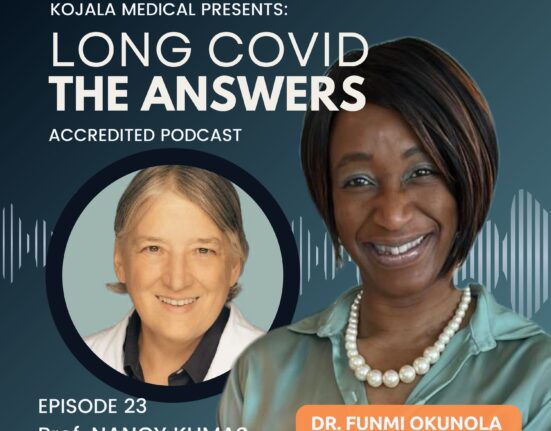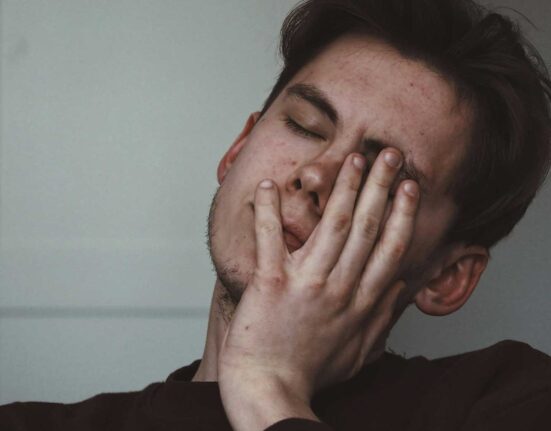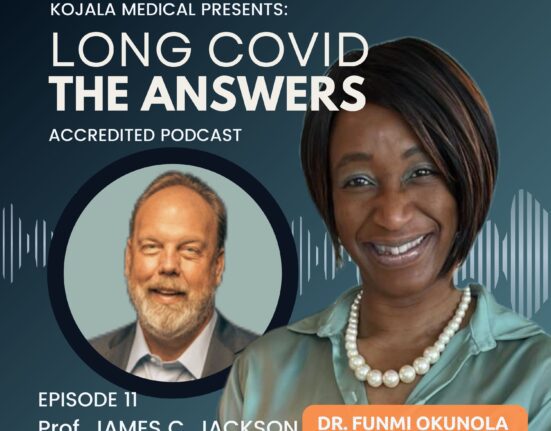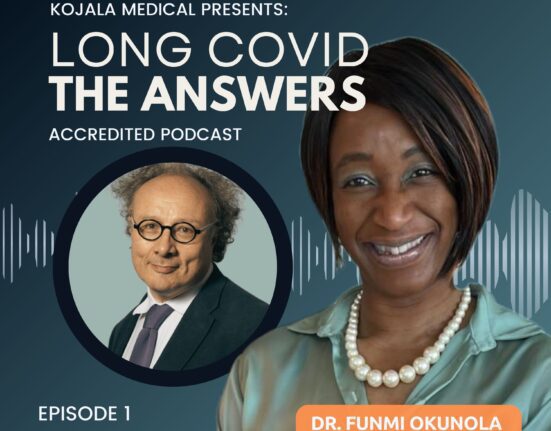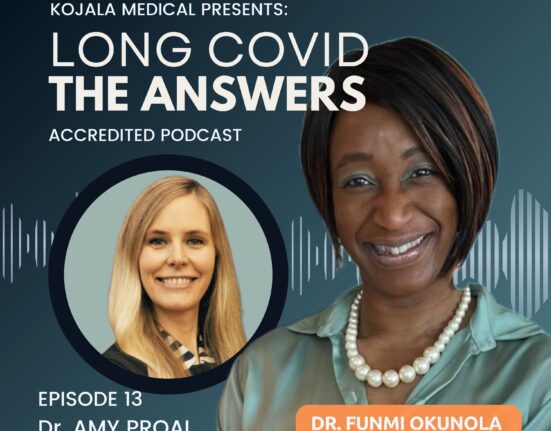
Dysautonomia and POTS with Professor Ric Arseneau
In this episode, Professor Ric Arseneau explores the intricacies of dysautonomia and Postural Orthostatic Tachycardia Syndrome (POTS), particularly in relation to long COVID. He explains the diagnostic challenges, emphasizing the importance of the NASA lean test and differentiating types of POTS, like hyperadrenergic POTS. Professor Arseneau discusses both non-pharmacological treatments, such as salt intake, compression garments, and recumbent exercise, as well as pharmacological interventions, including beta blockers and Fludrocortisone. He highlights the overlap of symptoms between chronic fatigue syndrome and POTS, providing a comprehensive look at managing these often misunderstood conditions.
Guest – Prof Ric Arseneau
Note: The podcast has no bias. All conflicts of interest are highlighted with individual guests.
Healthcare Professionals | Earn 0.5 Certified Mainpro+® Credits! Please register/login to claim your CPD/ CEU credits.
Podcast Overview:
Key Points of the Podcast
1. Long COVID & Complex Chronic Diseases
- Exploring medically unexplained physical symptoms (MUPS).
- Challenges of psychiatric labeling in long COVID and chronic diseases.
- Pathophysiological understanding of long COVID, emphasizing immune system dysfunction.
2. Psychiatric Component & Its Misconceptions
- How psychiatric symptoms like anxiety, depression, PTSD often result from, not cause, long COVID.
- Cognitive Behavioral Therapy (CBT) used to address perfectionism, guilt, and pacing issues.
- Importance of trauma-informed care.
3. Intersection of Psychiatry and Internal Medicine
- Debate about whether long COVID should fall under psychiatry or internal medicine.
- Highlighting trauma’s impact on long COVID patients, including PTSD, IBS, and migraines.
- Importance of holistic care addressing both physical and psychological aspects.
4. Dysautonomia & POTS: Diagnosis
- Importance of the NASA lean test for diagnosing POTS.
- Differentiating between types of POTS (e.g., hyperadrenergic POTS).
- Checking blood pressure and salt consumption as diagnostic tools.
5. Non-Pharmacological Management of POTS
- Strategies like salt intake, head elevation, compression garments, and recumbent exercises.
- Adjusting diet with low-carb, small, frequent meals to manage symptoms.
- Physiotherapist’s expertise shared on non-pharmacological management.
6. Pharmacological Treatment of POTS
- Use of beta blockers, Evabredine, and Mestinon for POTS management.
- Discussion of Fludrocortisone (Flirinef) and its use in patients who can’t tolerate salt.
7. Long COVID, Dysautonomia, and Brain Perfusion
- Poor brain perfusion in chronic fatigue syndrome and long COVID.
- Overlapping treatments between POTS and chronic fatigue symptoms.
DISCLAIMER: The information in this podcast is provided for informational purposes only. You should not use any information discussed in this podcast and related materials to make medical or healthcare related decisions. Always consult a your physician or other qualified health care provider with regards to diagnosing managing your medical condition. Any medications or treatments, including any discussed in this podcast, should be initiated and managed by a qualified health care professional.
Podcast Transcript:
Healthcare Professionals: Please note to claim Certified CPD / CEU credits toward your medical license (Canada & reciprocal CPD/CEU Worldwide), you will need to register or log in.
Episode 17 – Dysautonomia, POTS, ME/CFS & Long COVID ft. Prof Ric Arseneau
[00:00:00] Funmi Okunola: The information in this podcast is provided for informational purposes only. You should not use any information discussed in this podcast and related materials to make medical or healthcare related decisions. Always consult your physician or other qualified healthcare providers with regards to diagnosing and managing your medical condition. Any medications or treatments, including any discussed in this podcast, should be initiated and managed by a qualified healthcare professional
Funmi Okunola: [00:00:00] Welcome to Long COVID – The Answers. Today’s Episode is part of our series about the neurological impact of Long COVID. Today we will discuss dysautonomia, as well as the practical diagnosis and management of postural orthostatic tachycardia or POTS. I’d like to introduce Professor Ric Arseneau.
Professor Arseneau is a clinical professor at the University of British Columbia in Vancouver, Canada, and a specialist in internal medicine with expertise in ME/CFS.
He was the physician lead for the Provincial Echo Education Program for Long COVID in B.C. and was formerly the Director of Program Planning of the B.C. Women’s Hospital Complex Chronic Diseases Program in Vancouver. Welcome, Ric.
Ric Arseneau: Thank you.
Funmi Okunola: Ric, do you have any conflicts of interest to declare?
Ric Arseneau: None, thank you.
Funmi Okunola: I’d like to start with a definition of dysautonomia extracted from “Dysautonomia [00:01:00] International” dated 2012. Dysautonomia is an umbrella term used to describe various conditions that cause a malfunction of the autonomic nervous system. The autonomic nervous system, or ANS, controls most of the essential functions of the body that we do not consciously think about, such as heart rate, blood pressure, digestion, and temperature control.
The ANS is made up of two branches, the Sympathetic Nervous System, or SNS, and the Parasympathetic Nervous System, or PNS. The SNS controls the more active fight or flight responses, such as increasing heart rate and blood pressure. The PNS can be thought of as the rest and digest part of the autonomic nervous system, as it slows down the heart rate and aids in digestion.
Ric, could you please tell us the main forms of dysautonomia that affect Long Haulers and why? Thanks.
Ric Arseneau: So, let’s just look at the big picture. First is that most patients who have Long Haul COVID or Long COVID have [00:02:00] more than one set of symptoms, and dysautonomia is only part of it. So, patients who have these conditions tend to have a combination of pain, fatigue, sleep disturbance, brain fog, and unexplained symptoms, and the unexplained symptoms are usually neurologic, including dysautonomia, gut. With these conditions, chronic fatigue syndrome is very common and dysautonomia is part of chronic fatigue syndrome.
Those symptoms and patients will have an imbalance – one of the classic characteristics of these conditions. We’ve talked about the sympathetic nervous system, and the parasympathetic is when these patients have an imbalance in sympathetic nervous system because of glial activation and inflammatory cytokines in the brain. The brain is stuck in a loop that it can’t turn off.
That loop includes activation of the autonomic nervous system, specifically the [00:03:00] sympathetic, with a down regulation of the parasympathetic. So, these patients are caught in fight or flight all the time, and their rest, digest, heal is turned off, so they’ll present with a lot of different symptoms.
The most common ones have to do with heart rate in this patient population. It might be something as simple as a resting heart rate that’s higher than it used to be for some patients. It might even go above 100, and we call that isolated sinus tachycardia. For other patients it will present as nightmares and night sweats.
It might present as GI motility problems, temperature regulation problems, and then a subset of those will fulfill criteria for classic postural orthostatic tachycardia syndrome. Why it’s called postural orthostatic is because postural and orthostatic mean the same thing. I think they just needed a vowel in there.
So, POTS are those patients who go from lying to [00:04:00] standing or sitting to standing. POTS is a disease of gravity. If you were on Mars, we probably wouldn’t have any POTS because there wouldn’t be enough gravity to pull the blood down into our extremities. What happens with these patients is because of venous pooling the heart goes faster.
But you’ll recall that the faster the heart rate the less diastolic filling time there is, and then the faster it goes, the less effective it becomes at moving blood. So, these patients, in an attempt to compensate for the venous pooling, their heart goes too fast, they get less blood flow to the brain, they feel dizzy, and they might even faint.
So, when I say it’s a disease of gravity, and I’m not joking, is that the main test that we use for this is called the “NASA Lean Test”, and why NASA? Because astronauts who spend time in the space station where gravity is removed, when they get [00:05:00] back on earth, their sympathetic nervous system is out of practice, and so those astronauts get POTS.
The NASA Lean Test is a simple test that allows you to check for POTS. All it requires is for patients to stand up first thing in the morning, lean against the wall, obviously you want to spot her in case she faints, and monitor her heart rate for 10 minutes.
If her heart rate jumps by 30 beats or more, that’s diagnostic for POTS. No need for a tilt table. In fact, the Canadian Cardiology Group consensus says that unless you’re looking for something else or a complicated situation, you do not need a tilt table. In fact, the tilt table is less sensitive and less specific than the NASA Lean Test.
Less sensitive because if you do it in the afternoon, you’re less likely to pick up these conditions. In our last talk, we talked about the problems of syndrome-based diagnosis. You’re either in [00:06:00] or you’re out. The reality is some patients only have POTS in the morning. So, does that mean they’re cured in the afternoon?
Some patients will only have POTS when they’re in post exertional malaise, and so these conditions again exist along a spectrum. Some patients will have continuous symptoms. Some patients will only have symptoms when they’ve overdone it, and some patients will only have symptoms in the morning. The problem also is that these conditions don’t occur in isolation.
One of the things that we see with the patient population who have Long COVID or chronic TS and fibromyalgia, is something called NMH – Neurally Mediated Hypotension, which is a fancy way of saying brain-based low blood pressure. So, some patients will have a combination of NMH hypotension and POTS.
What I normally recommend is that the POTS test be done twice, once with heart rate and once with blood pressure. The blood pressure will allow you to [00:07:00] identify two sub-groups. The first sub-group are the patients who have POTS and low blood pressure. The second group are patients who have a sub-type of POTS called hyperadrenergic POTS. Those are patients who have a jump in blood pressure by 20 points or more that’s consistent, and the reason you say, “well, why do we want to know if they have this hyperadrenargic sub-type of POTS” is that the vast majority of patients with POTS can be treated simply with just volume expansion with salt. We recommend 9 grams a day.
But if you have hyperadrenergic POTS, salt is contra-indicated. You can download the handout on my website on how to do it. There’s a video that explains how to do it and a video on POTS. There’s also a webinar by a physiotherapist who looks at the non-pharmacological treatments POTS.
So, to kind of summarize that dysautonomia is an imbalance in this patient [00:08:00] population that are stuck in the sympathetic nervous fight or flight and downregulated rest, digest and heal, and who have manifestations of too much adrenaline. Many patients will actually be very, very good at describing their symptoms. They’ll say, “I feel like my body is anxious, but I don’t have any anxious thoughts”, and that’s why often these patients get diagnosed as psychiatric with anxiety. I mentioned in our last video that for patients with POTS, that over 90% of them get diagnosed with a psychiatric diagnosis before they get the true diagnosis of POTS.
Funmi Okunola: It’s just astonishing to me. I’ve done nearly thirty years of medicine and only just really found out about POTS since the pandemic and the advent of Long COVID, and so many people are affected. It sounds like a really [00:09:00] interesting though very frustrating syndrome to have. This just seems like a huge neglect in our medical training – massive.
Ric Arseneau: It goes to the two factors that we talked about. You look normal. So, you’re either crazy or faking it, and you’re a woman. Luckily, we’re seeing some changes in that even a lot of conditions that we were taught that were psychological.
You’re probably familiar with the “Rome Criteria for IBS” – the gastroenterologists meet every few years in Rome to discuss the criteria from the last Rome meeting. They agreed to make it known that these are not functional disorders, so they’re not psychiatric disorders, that these are gut microbiome brain disorders, and so some of the names have been removed. We used to call it Functional Abdominal Pain Syndrome. [00:10:00] Well, now that’s been renamed Central Abdominal Pain Syndrome, and Functional Dyspepsia has been renamed Non-Ulcer Dyspepsia, and Globus Hystericus – Hysterectomy, Womb, and those were crazy ladies who think they’re choking.
So, all these conditions that mostly affect women have been blamed on psychological/psychiatric when in fact they’re biological in nature with brain, gut, microbiome, and we’re just starting to appreciate the fact that the gut makes more neurotransmitters, more serotonin than the brain, and makes 50% of your dopamine, and that there are glial cells and neurons in your gut, and that the parasympathetic nervous system has direct connection to the gut and releases cytokines that are helpful in keeping the gut healthy. There’s this huge area that was completely neglected that we’re just starting to scratch the [00:11:00] surface.
Funmi Okunola: Why do you think women – what is it about our physiology or anatomy that in your opinion is making us particularly affected by these syndromes?
Ric Arseneau: Well, I don’t have to make it in my opinion because I just saw an article that was published in Nature.
What they’re saying is that it may have to do with the fact that women have two X chromosomes, and with the line hypothesis of having to down-regulate one of the X chromosomes, that it makes women at higher risk for pain and for immune disorders and autoimmune disorders. So that’s the current theory. It has to do with the fact that women have two X chromosomes.
Funmi Okunola: Okay. Also, there will be (you have to be very careful with saying this and not seeming to be prejudicial), that you do see some women that present with a psychological disorder that have [00:12:00] fibromyalgia, you know, an extreme psychological event. It could be some form of abuse. So basically, possibly what’s happening there is maybe something’s happened, they’ve been exposed to a virus or bacteria in the past, their immune system has reacted, but that psychological event has triggered a train reaction resulting in something like this.
Ric Arseneau: That’s why patients who have a history of irritable bowel syndrome, migraines, PTSD, are more likely to get Long COVID. You won’t have seen this in the literature because I haven’t seen it yet, but this is something that I predicted at the beginning of the pandemic, and I can tell you that in my patient population that I see, it’s virtually a hundred percent.
So, patients present with chronic fatigue syndrome, it’s almost never a disease of isolation. 70% of them will also have fibromyalgia, 25% of them will also have IBS, 25% of them will also have migraines, 30% [00:13:00] of them will also have pelvic pain syndrome. So those conditions fit together under the family name of central sensitivity syndromes.
It’s not a separate syndrome. Some people don’t like the name. It doesn’t matter whether you use the name or not. Just to say that in my practice, and I’ve been collecting, I’ve seen almost 8,000 patients now, is that the average is five to six, and if I see a patient with isolated chronic fatigue syndrome, it’s usually very mild and they have a really good chance of recovery.
The more central sensitivity syndromes that you have, and the most that I’ve seen in a single individual is 14, and so the average is five to six, the high end is 14 and usually the low end is two. Very rarely do I see just chronic fatigue syndrome, just fibromyalgia without at least tension, headaches, migraines, irritable bowel syndrome, interstitial cystitis, pelvic pain syndrome, TMJ, POTS, et cetera, et cetera.
Funmi Okunola: [00:14:00] So you look at these statistics, 15 to 30% of people who are infected with SARS-CoV-2 end up with Long COVID, and of those 60% will recover, but the other 40% don’t, and maybe go on to get worsening symptoms. So why is it that? Do you think that some people recover, and some people have this multitude of syndromes?
Ric Arseneau: I think it has to do with pre-disposition, because although (and this again is just my opinion, it’s not based on anything published), it’s just my experience that the people who recover have a few things in common.
First off, they usually don’t have a family history of any central sensitivity syndrome. There’s nobody in their family that has POTS, or Long COVID or chronic fatigue or fibromyalgia. The second thing is they don’t have pre-existing central sensitivity syndromes themselves. So, they don’t have pre-existing PTSD or pre-[00:15:00] existing IBS and they tend to be younger, and they tend to be patients who have a milder form.
They’re not the totally incapacitated patients, and when you think about it, that kind of describes the young adults who get mono and who recover. So, they tend to be younger patients who have a milder form of the disease, who have no family history of central sensitivity syndromes, and who have no central sensitivity syndromes themselves, and I can usually predict that somebody who has a bunch of family members with central sensitivity syndromes, who’ve had three or four central sensitivity syndromes before getting COVID, who now get COVID and have a severe form, those are the patients who are not going to recover. When you look at the big picture that way, you see there’s certain phenotypes for how patients present, and of course my practice is biased because it takes a long time for people to be diagnosed. So, all the people who have the milder [00:16:00] form of the condition, they’ve gotten better, and they don’t see me. I get to see that 60% of the patients that you were talking about – the ones who have the more severe forms.
Occasionally, I will get people who see me, who are really lucky, who see me really early on, because one of the other things that we now know is that if one of your post viral syndromes is chronic fatigue syndrome, and you push through the post exertional malaise, one of two things will happen.
It will take you longer to get back to normal, or you will lock in a lower level of function, which is a problem because what do doctors tell patients? Stay at work, exercise, keep pushing those things we now know, and there’s lots of literature to back it up, cause harm. So, when I was in charge of the Long COVID Education Program for the Province, I really only had one goal in mind, and that was to make sure that physicians didn’t tell patients to exercise, that [00:17:00] they would find out those who had post exertional malaise, and anybody who had post exertional malaise, the treatment is to rest and to make it really obvious that I want them to rest. I call it aggressive rest therapy and aggressive rest therapy is the three D’s. Delete anything that doesn’t have to be done, delay anything that can wait, and delegate anything that somebody else can do. So, I make it very explicit that it’s actual rest – that’s the treatment.
Normally when I see patients they’re almost always coming to me getting worse, and the story is, “I’m getting worse, okay, now I can’t do my physical life, okay, now my social life is gone, okay, now my house is kind of dirty and not as clean as it used to be, okay, now I’m having a hard time doing my self care”, and still they’re pushing. I always see that my first job is to stop the downhill trend, to get them to pace and rest, and then to try [00:18:00] and find their ceiling. If they have depression, treat depression. If they have pain, treat pain. If they have sleep disturbance, treat sleep disturbance, et cetera, et cetera, to try and get them to their ceiling.
Funmi Okunola: I think there needs to be a whole new discipline. In medical training, you have the big things like cardiovascular disease, respiratory disease, gut disease that you have to know a lot about, and then you have the sub-specialties that you get a little bit of training on, and I think really these complex chronic diseases need to be a big major slot in medical training. I think people like yourself need to be referred to the World Health Organization to set something up disseminated across learning internationally.
Ric Arseneau: It’s ironic that you mentioned that because prior to COVID, there was a group of us around the country who were working on an application for the Royal College for an area of special competence.
For instance, if you train in cardiology, you get a cardiology [00:19:00] FRCP, but then you can do an area of special competence in anti-arrhythmia. Yes. What we were working on just prior to the pandemic, and it’s on hold because everybody’s been pulled in different directions, is we’re looking at developing an area of special competence in medical psychiatry.
We were looking at areas of medically unexplained physical symptoms, and we were looking at involving family physicians, psychiatrists, and internists in a one -year extra training program for these conditions.
Funmi Okunola: Yeah, I’m worried about it falling under the rungs of psychiatry because then I think we could fall into the trap of labeling again – people that suffer from complex chronic disease as having a psychiatric syndrome.
We’ve got an interview with Amy Proal about post- viral illness, about post-viral disease, [00:20:00]and another interview with Professor Altmann about the possible causes of Long COVID. This is clearly a pathophysiological issue, and a dysfunction of the immune system, which is affecting our nervous system and brain, amongst other things.
So, I know there’s definitely a psychiatric element, but really the medical profession needs to wake up to the fact that this is a disease. It is a real disease and not in people’s heads, and I think if it’s associated closely with psychiatry, we’ll fall back into that stereotype. I don’t know how you feel about that.
Ric Arseneau: Yeah. That’s been one of the complaints from certain patients, because the reality is, remember, we talked about Long COVID and Post COVID. The three categories were tissue damage, psychiatric, and no tissue damage post- viral syndrome. Well, most patients with these conditions have comorbid, depression, anxiety or PTSD.
It’s not the cause of their symptoms, but it’s often [00:21:00] in response to their symptoms, and those things can make a big difference to those who haven’t seen me, who are angry that I do cognitive behavior therapy in my practice because they somehow think that I’m helping patients think themselves better when in fact the reason for the cognitive behavior therapy is – do you have guilt, perfectionism, acceptance issues that stop you from pacing and taking care of yourself? So, we’re not thinking ourselves well, we’re looking at what are the barriers to pacing, and we talked about finding your ceiling.
Well, for a lot of patients, finding your ceiling includes treating underlying depression, getting treatment for underlying PTSD, and so on the one hand we don’t want to blame this on psychiatry, but on the other hand, we don’t want to throw the baby out with the bathwater because of what happened with the Complex chronic Diseases (clinic).
The reason that clinic was set up was because of advocacy groups, and the advocacy groups had exactly the same issue that you [00:22:00] thought we’re thinking about is they didn’t want any flavor of psychiatry attached to these conditions. So, when I tried to hire a psychiatrist, there was a big backlash because they didn’t want there to be any acknowledgement that patients with these conditions have a psychiatric component.
So, you can imagine that if you’re bed bound, you’re going to get depressed. That if you have an activated sympathetic nervous system, you’re going to be more prone to anxiety, and because of this, like a large portion of patients with these conditions who also have adverse childhood experiences and PTSD, that if you treat the PTSD, you actually downregulate the sympathetic nervous system, you upregulate the parasympathetic nervous system, and you cause a significant improvement in symptoms, and so it’s counterintuitive to say, well, it’s not psychiatric, but psychiatric treatment can help, but not for the reason that people think.
Funmi Okunola: Yeah, I totally see your argument. I could [00:23:00] probably talk to you about this all day and all night, and it would be foolish to ignore that particularly now that there’s research showing that with the SARS-CoV-2 infection, for example, there’s a decrease in serotonin which predisposes you to depression.
So, there’s all sorts of functional things happening that lead to psychiatric disorders. You can’t ignore it. I think I would be more comfortable if this was classified as an extension of internal medicine, and that psychiatry was involved with the management of it. That would make me feel more comfortable because I can just see all sorts of prejudicial issues coming about otherwise.
Ric Arseneau: Yeah, I think you’re right. Then that was one of the issues that was definitely brought up, and it’s the same thing as I deal with, you know, one of my other areas of expertise is eating disorders, but I deal with the medical complications of eating disorder. So, we’re very close with the psychiatrist, but what’s interesting is that patients with eating disorders are also more likely to develop Long COVID, and the reason for that is that patients with eating disorders are more [00:24:00] likely to have PTSD, irritable bowel syndrome, migraines, adverse childhood experiences.
There are a lot of these conditions, and that’s why I was really keen when the Province was highlighting trauma-informed care, because as an internist, I learned all about this by myself. I went back and I trained as a group psychotherapist, and I have a focus on trauma as my area of interest which overlaps with a lot of what I do.
There is a lot more trauma out there. It’s interesting. The Mayo Clinic, we’ve talked about before, they’re quite at the forefront of this. If you include all of the central sensitivity syndromes, ME/FM, and trauma related stuff, they estimate that one in five primary care visits is related to these conditions.
Funmi Okunola: Sobering. So, I’m going to get back to POTS because that was initially what we were talking about. We’ve diversified into something [00:25:00] completely fascinating that I know the listeners will also be interested in. So, thank you very much, Ric. You know, I could carry on this talk all day, but I want to touch again on management and diagnosis of POTS.
You’ve really talked about the NASA Lean Test and how family physicians can utilize that. I guess it’s something that sufferers could also utilize. You touched on some aspects of practical management. Could you give us an idea of what the non-pharmacological management of POTS would be and how you approach doing that, and when you decide to move into the medication or pharmacological management of it?
Ric Arseneau: Yeah, I think management of POTS is one of the areas where we have lots of tools, and most family physicians are familiar with those tools. Most patients do not need to see a cardiologist. The first thing is to make a diagnosis. You do the NASA LeanTest, and [00:26:00] the second thing you do is the blood pressure because the blood pressure will help you in two ways.
If the blood pressure is low, it tells you that the patient has POTS, and low blood pressure, which is called NMH, or if the blood pressure is high, the patient has hyperadrenergic POTS. That tells you what the next step is, because usually the next step is non-pharmacologic management is with salt, and we recommend 9 grams of salt per day, and if you remember from medical school, normal saline is 0.9%, which means 0.9 grams per 100 mils, which means 9 grams per day. That’s equivalent to one liter of normal saline per liter, so we give patients orally a liter of normal saline every day. When we tell a patient to take a heaping teaspoon of salt with four cups of water, that’s equivalent to a liter of normal saline.
We normally start with that, and then we get patients to come down to see what amount they actually need. But about 90% of patients with mild aversion POTS or intermittent POTS that’ll be enough. Okay. For other [00:27:00] patients, we have other things that we can do that include things like in the old days we used to put phone books under the head of the bed, but I don’t have phone books anymore.
So, you go to Costco, or you go to Home Depot, you buy two bricks, and you put two bricks underneath the head of the bed, and that’s the same as we were talking about with the astronauts is that when you go to sleep, you remove gravity. If you raise the head a little bit, you actually keep the sympathetic tone up so that you don’t go through that kind of high phase.
The other thing is compression garments, especially waist high, and then recumbent exercises. But there’s a great presentation on our YouTube channel by Trinita, who is a physiotherapist who has expertise in POTS, and she talks about all of the non-pharmacologic managements.
Another example would be diet. Patients with these conditions are especially sensitive to large meals and large carbohydrate meals. So, if they have large carbohydrate meals, all the blood goes to the stomach, which helps with the [00:28:00] pooling and leads to dizziness, so we usually recommend low carbohydrate, small or high-frequency meals.
Those patients who either don’t tolerate salt, who have hyperadrenergic POTS or who have persistent symptoms, those are the ones that we treat with medication. There are only really three common medications that we use. One of them is a beta blocker, which will block the sympathetic response, and those are a really good first choice because these patients have dysautonomia, not just tachycardia, and so that the beta blocker will help with all of the symptoms of the dysautonomia. It will also help with the physiologic manifestations of anxiety that are adrenaline based, so a really good choice.
The other one that we use is Ivabradine, and so Ivabradine has become popular in the last few years because of its use in congestive heart failure. Ivabradine is an F channel blocker, [00:29:00] and F stands for funny. Not sure why, but it’s an F channel blocker, which is in the AV note, and it suppresses the cardiac pacemaker without all the other beta blockade effects, so it’s specific to the heart rate. That’s the second choice. The third choice that we use is Mestinon.
So, the medication that we use, the anti-cholinergic that we use for patients with myasthenia gravis, and there are some early studies to suggest that it also helps with chronic fatigue syndrome. We know that patients with POTS or with low blood pressure have poor perfusion to their brain. But there’s intra-vascular studies that show that patients with normal blood pressure and normal heart rate who have chronic fatigue syndrome also have poor perfusion to their brain. So that treating them as if they have POTS, even when they don’t have the physical manifestation, can improve their symptoms.
So, Mestinon, and then for a sub-group of patients who [00:30:00] don’t tolerate salt, but we want to increase their blood volume, we put them on fludrocortisone, Florinef – and keep in mind that that causes low potassium, low magnesium, so you need to follow. Basically, do the NASA LeanTest, make a diagnosis, see what happens to your blood pressure. Does it stay the same? Does it go down? Does it go up? Make a decision about salt. Is it an option? Does it tolerate it? Look at non-pharmacologic management, and then add either a beta blocker, ibuprofen, Mestinon, or Fludrocortisone.
All of this is outlined in detail in our webinars, and all of those medication handouts are also available on our website as well as downloading the NASA Lean Test which explains to the patient how to do the test.
Funmi Okunola: You know, this has been a fantastic interview, Ric. I can’t tell you how grateful I am for you imparting your wide knowledge and [00:31:00] expert opinion and experience to this program.
I have been thoroughly educated today. I’ve read a lot of what you’ve said because I’m researching the whole subject, but actually hearing you impart your knowledge has been more than valuable, and I am extremely grateful as I’m sure are all our listeners.
Ric Arseneau: That’s very kind of you to say. It’s a pleasure for me to be here and to help out.
Funmi Okunola: Oh, well, do join us next week for another Episode of Long COVID – The Answers, and thank you for joining us today.
Funmi Okunola: Some questions for listeners to consider.
What are your top five takeaways from this Episode?
How will this Episode change your practice or perception of this disease?
What will you do to act on what you’ve learned?
Please discuss your thoughts on our social media outlets such as Twitter or X, our website blog, Instagram, Facebook, LinkedIn.
Please rate this Episode.
SHOW NOTES:
Professor Ric Arseneau MD is a clinical professor at the University of British Columbia in Vancouver, Canada, and a specialist in Internal Medicine with expertise in Myalgic Encephalomyelitis or Chronic Fatigue Syndrome (ME/ CFS), Fibromyalgia and Long COVID. Dr Funmi Okunola MD talks to Professor Arseneau MD about ME/CFS, Long COVID and the diagnosis and management of Postural Orthostatic Tachycardia Syndrome (POTS).
REFERENCES:
3 YouTube Video of Physiotherapy Management of Dysautonomia/POTS by Trineta Mohan Bhojwani




